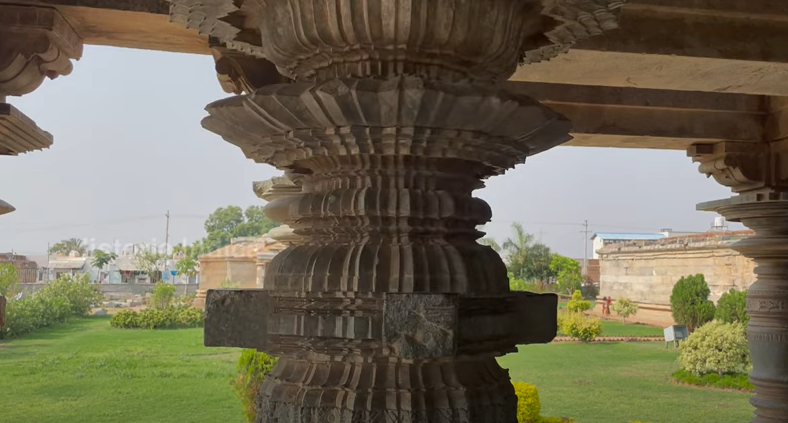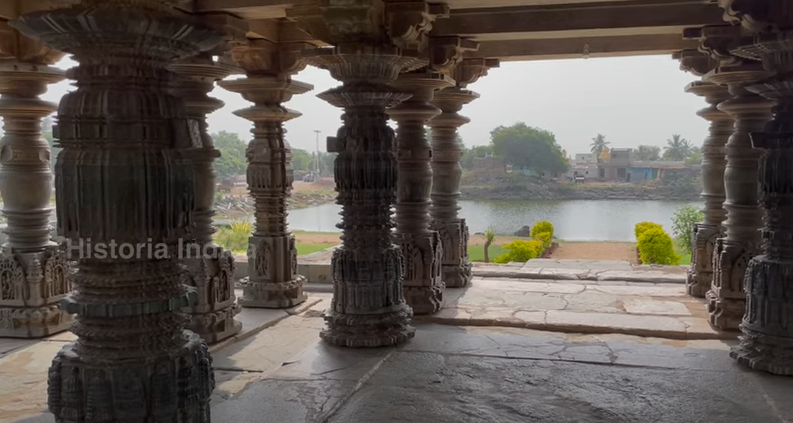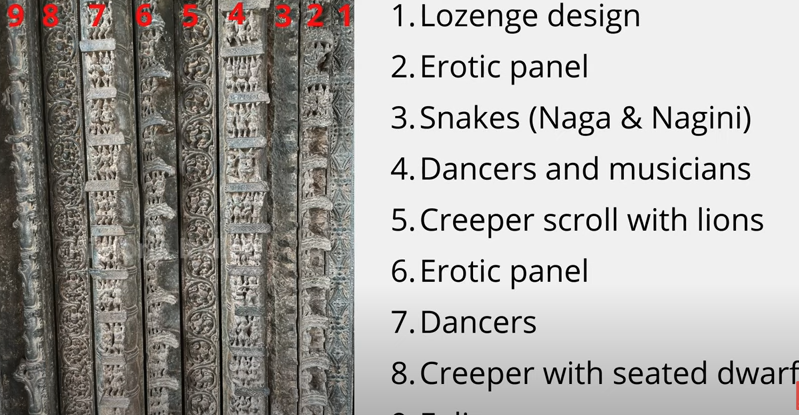Exploring the Majestic Itagi Mahadev Temple in Koppal, Karnataka
Though credit is given to the Hoysalas, for perfecting the art of temple building, but do you know that the first advances were made by the Chalukyas of Kalyana. The Kalyana Chalukyas were the first to use soapstone as the main material. Till then temples were built with sandstone. Art historian Henry Cousens described this monument as ‘the finest in Kannada country after Halebidu’. When it comes to ancient temples, India is a treasure trove of architectural wonders. One such gem is the Itagi Mahadev Temple, located in the quaint town of Itagi in Koppal district, Karnataka.


A Glimpse into the History
The Itagi Mahadev Temple, also known as the Mahadeva Temple, is believed to have been constructed in the 12th century by the renowned architect Jakanachari. It stands as a testament to the architectural brilliance of the Hoyasala dynasty, which ruled the region during that period.
The temple was built using soapstone, a unique material that was commonly used in the construction of Hoyasala temples. This temple is considered one of the oldest and finest examples of soapstone temples in India.




Architectural Marvel
The entrance of the Garbagriha / Sanctum Sanctorum has layers of carvings in minute detail. The tower atop the sanctum has a unique shape – a stellate pyramid and is well decorated with repeated motifs. It is said to be sculpted to perfection by the Kalyani Chalukyas, finest in the state and second only to the Halebidu Temple. Incredible levels of carvings and sculpturing led this temple to be known as ‘Devalaya Chakravarty’; the ornamentation and intricate carvings on the pillars, ceilings, inner and outer walls are just unimaginable!



The main temple is surrounded by 13 minor shrines, each with a shiva linga inside. The decorated shikhara, pillars, sculptures and exquisite carvings demonstrate highest levels of human possibilities! As per the Historians, the Shikara is well proportionated from each side.




Mandapa has beautifully sculpted pillars which still has a sparkling shine, one can see the reflection of themselves on it. A well maintained garden with pathway leads to the open Pillared Hall (Navaranga) which has about different beautifully carved 64 Pillars, out of these 24 Pillars are fully built and support the main ceiling, while rest of them are constructed for the parapet wall around Mandapa. Each Pillar has its own different design, some elaborate, some simple. It looked like Sculptors took liberty in crafting this masterpiece to the best. The temple is built with Soapstone, easily malleable.





Exquisite Carvings and Artwork
The Itagi Mahadev Temple is renowned for its elaborate carvings, which adorn every inch of the temple's exterior and interior walls. These carvings depict scenes from Hindu mythology, showcasing the stories of gods, goddesses, and epic tales.
The roof of the temple has been raised over very beautiful late cut pillars and other types of temples and as we see, there is a central circle in the middle in which various cultural programs of the temple were held at one time or another. When we look above the roof of the pavilion, there also very fine, very small deities in pyramidal form have been beautifully carved on the sides of an octagon. These sculptures gradually deteriorate with time. Here we see Nataraja, Lord Shankar who is shown in the form of a death. More than 15 buildings or monuments are found around this temple complex.
The Miniature Carvings:
The temple is adorned with tonns of miniature carvings which are depicted on each and every section of the temple. But the most adorned portion of the temple is it’s doorway, which is depicted with thousands of small carvings. but the main attraction of the doorway is the decoration on the upper part of the door and the sideways. Sideways are carved out of 9 layers which have a number of carvings which are of the size of few inches and can be measured or captured within fingers. 9 layers of the door shows the various rituals of the hindu’s history. The temple also features carvings of other deities, such as Lord Vishnu, Goddess Lakshmi, and Lord Ganesha.







The 1200 Years Old Still Working Stepwell:
There is a very big lake in front of this temple complex, which is about 100 meters long and 125 meters wide. Nowadays, many houses have been built around this lake and it has been the main source of water since ancient times. Now The pushkarini (stepwell) has been restored to its glory.

This best specimen of Kalyana Chalukya temple architecture is the Mahadeva Temple at Itagi. Just over an hour’s drive from Hampi, this temple is described as Devalaya Chakravarti in an inscription dated 1112 CE meaning Emperor among Temples. This architectural masterpiece was built by the Western Chalukya King Vikramaditya VI’s Army Commander named Mahadev in 1112 CE and is dedicated to Lord Shiva.
How to Reach and Opening Time
The Itagi Mahadev Temple is located in the town of Itagi, which is approximately 30 kilometers from the district headquarters of Koppal. The nearest major city is Hubli, which is around 150 kilometers away. Visitors can reach the temple by road through well-connected highways.
The temple is open to visitors from sunrise to sunset. It is advisable to visit during the early morning or late afternoon to avoid the crowds and to witness the temple in its serene and peaceful atmosphere.
Click here To Visit This Temple.
Location on Map
Here is the location of the Itagi Mahadev Temple on the map: Click Here
Conclusion
The Itagi Mahadev Temple is a true architectural marvel that showcases the rich cultural heritage of Karnataka. Its intricate carvings, towering vimana, and serene atmosphere make it a must-visit destination for anyone interested in history, art, and spirituality. A visit to this ancient temple is sure to leave you in awe of the craftsmanship and devotion of the artisans who built it.
So, if you’re planning a trip to Karnataka, don’t miss the opportunity to explore the captivating beauty of the Itagi Mahadev Temple in Koppal. Embark on a journey through time and immerse yourself in the grandeur of this ancient architectural masterpiece.








